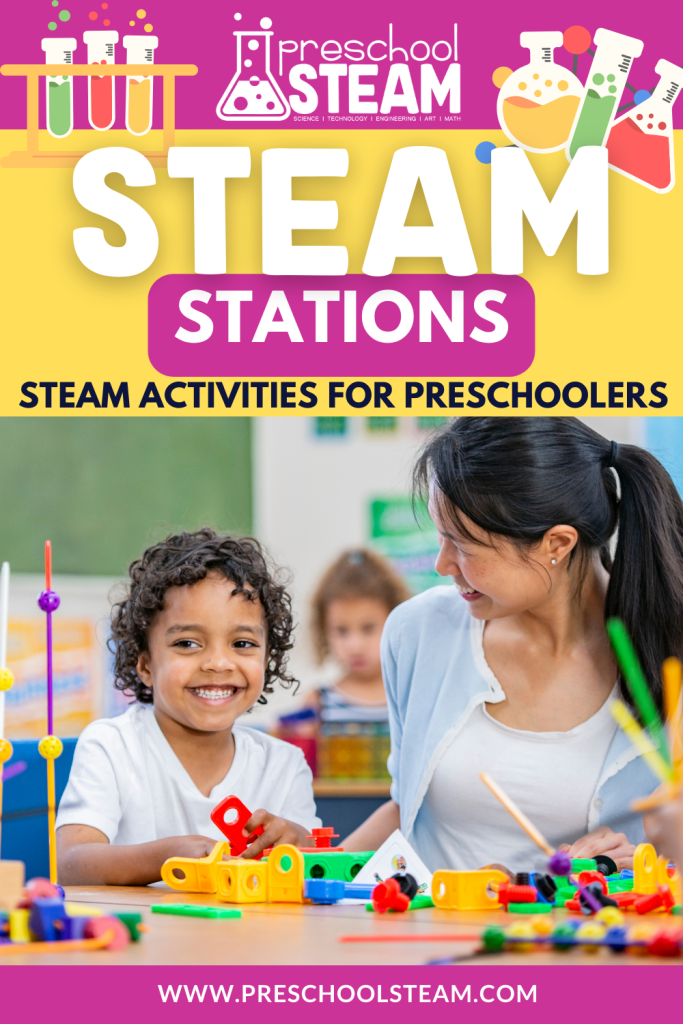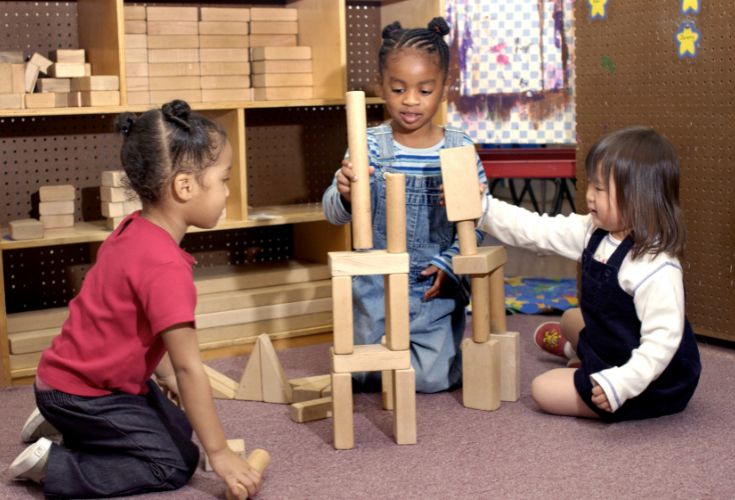
Setting up STEAM (Science, Technology, Engineering, Art, and Math) stations in your classroom can transform the learning experience for preschoolers. These hands-on, interactive stations encourage exploration, creativity, and critical thinking. In this blog post, we’ll guide you through the process of creating effective STEAM stations that captivate young minds and foster a love for learning.
Why STEAM Stations?
STEAM stations provide a structured yet flexible learning environment where children can engage in self-directed exploration. These stations support various learning styles, promote problem-solving skills, and encourage collaborative learning. By integrating STEAM concepts into your classroom, you can create a dynamic and stimulating space that nurtures curiosity and innovation.
Key Components of Effective STEAM Stations
- Variety of Materials: Include a wide range of materials to cater to different interests and stimulate various aspects of STEAM learning.
- Clear Instructions: Provide simple, clear instructions to guide children through activities while allowing room for creativity and exploration.
- Accessibility: Ensure materials and tools are easily accessible to preschoolers to encourage independence.
- Flexibility: Design stations that can be easily adapted or expanded to introduce new concepts and challenges.
Setting Up Your STEAM Stations
1. Science Station: The Discovery Lab
Objective: Encourage scientific exploration and observation.
Materials:
- Magnifying glasses
- Microscope (child-friendly)
- Nature specimens (leaves, rocks, insects)
- Simple science experiment kits
- Measuring tools (rulers, scales)
Activity Ideas:
- Examine and compare different nature specimens.
- Conduct simple experiments, such as mixing baking soda and vinegar.
- Use magnifying glasses to observe the details of leaves and insects.
Guiding Questions:
- What do you see when you look through the magnifying glass?
- How do the leaves differ from each other?
- What happens when you mix these two substances?
2. Technology Station: The Tech Corner
Objective: Introduce basic technology skills and digital literacy.
Materials:
- Tablets or computers with educational apps
- Digital drawing tablets
- Simple coding toys (like Bee-Bots)
- Headphones
Activity Ideas:
- Explore interactive educational apps that teach letters, numbers, and shapes.
- Create digital art using drawing apps.
- Program a simple coding toy to navigate a maze.
Guiding Questions:
- How does this app help you learn new things?
- What can you create using the drawing tablet?
- How can you program the toy to reach the end of the maze?
3. Engineering Station: The Build Zone
Objective: Promote problem-solving and engineering skills through construction and design.
Materials:
- Building blocks (various types and sizes)
- Recycled materials (cardboard tubes, plastic bottles)
- Tools (child-safe hammers, screwdrivers)
- Blueprints or building challenges
Activity Ideas:
- Build structures using different types of blocks.
- Design and construct bridges or towers with recycled materials.
- Follow simple blueprints to create specific structures.
Guiding Questions:
- What materials work best for building a tall tower?
- How can you make your structure stronger?
- Can you follow the blueprint to build this bridge?
4. Art Station: The Creative Studio
Objective: Encourage artistic expression and creativity.
Materials:
- Various art supplies (crayons, markers, paints, clay)
- Craft materials (paper, scissors, glue, beads)
- Easels and drawing paper
- Inspirational art books or images
Activity Ideas:
- Create paintings or drawings inspired by different themes.
- Make collages using a variety of craft materials.
- Sculpt with clay and explore different textures and shapes.
Guiding Questions:
- What colors did you choose for your painting and why?
- How can you use different materials to create your collage?
- What shapes can you make with the clay?
5. Math Station: The Number Nook
Objective: Develop early math skills through hands-on activities.
Materials:
- Counting manipulatives (beads, buttons)
- Number cards and puzzles
- Measuring tools (tape measures, rulers)
- Simple math games
Activity Ideas:
- Sort and count different manipulatives.
- Complete number puzzles to practice sequencing.
- Measure objects around the classroom and compare lengths.
Guiding Questions:
- How many beads do you have?
- Can you put the number cards in the correct order?
- Which object is longer, and by how much?
Tips for Successful STEAM Stations
- Rotate Activities: Regularly change the activities to keep children engaged and introduce new concepts.
- Encourage Exploration: Allow children to explore and experiment freely within each station.
- Provide Support: Be available to guide and assist children as they work through challenges and make discoveries.
- Foster Collaboration: Encourage children to work together, share ideas, and learn from each other.
Setting up STEAM stations in your classroom can create a vibrant and engaging learning environment that encourages exploration, creativity, and critical thinking. By integrating science, technology, engineering, art, and math into your daily activities, you can help preschoolers develop a love for learning that will last a lifetime.
Have you set up STEAM stations in your classroom? Share your experiences and tips in the comments below. Let’s inspire each other to create the best possible learning environments for our preschoolers!

Leave a Reply